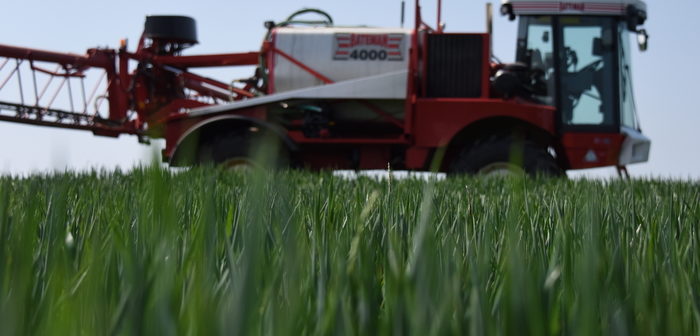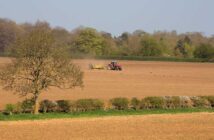Spring barley growers are being advised to modify their approach to broad-leaved weed control to counter the dry conditions being experienced across much of the UK.
England’s eastern counties have seen very little rainfall in April following a dry first quarter of the year during which rainfall was down 15% against the long-term average, according to Environment Agency statistics.
South west England and Northern Ireland have seen more rain than most but Corteva Agriscience, the agriculture division of DowDuPont, says growers will want to create the conditions for spring barley crops to thrive if they are to realise their yield potential.
Controlling key competitive broad-leaved weeds such as cleavers, chickweed and fumitory will be vital but herbicide category manager Alister McRobbie says the dry weather is making effective weed control tough.
“Many spring crops were drilled early and in good conditions but the recent dry spell has left some fields struggling get away,” Alister said.
“This has resulted in more open crops, and with it, the increased risk of late germinating weed flushes.
“For those weeds already present, a lack of soil moisture will limit herbicide uptake through the root, and leaves will harden off.
“Weeds will not actively grow without warmth and moisture so most will be dormant at present but they will move away rapidly as soon as the rain comes.”
Mr McRobbie said there are a number of tactics growers can employ in dry conditions to maximise herbicide efficacy.
Maintaining higher rates of herbicides which target the main weed threat in spring crops will help ensure chemical enters the plant.
“Consider adding an adjuvant to improve uptake and use higher rates,” Alister said.
Avoiding crop damage to maximise yield is likely to be of increased importance this season so Alister advises growers to avoid complicated tank mixes and consider splitting out some treatments.
“Leave an appropriate interval between pesticide and liquid nitrogen applications to allow crops to recover,” he adds.
“And avoid coarse quality sprays. If crops are already stressed this will damage their potential further.”
Timing applications is also important.
Mr McRobbie advises spraying in the middle of the day and in the afternoon when temperatures are at their highest.
He said: “Consider fieldwork early in the morning or later in the evening when soil moisture and humidity is at its highest and soil temperatures are cooler.”
Mr McRobbie recommends products containing Arylex Active, such as Pixxaro or Zypar, which are favourable in marginal conditions compared to sulfonylureas which require actively growing plants.
“Activity may be slightly slower than usual, but the active will sit in the plant and do the job once the weed enters active growth,” he said.
“Growers should be aware of the higher risk of residual carryover of sulfonylurea chemistry in dry conditions too.”




